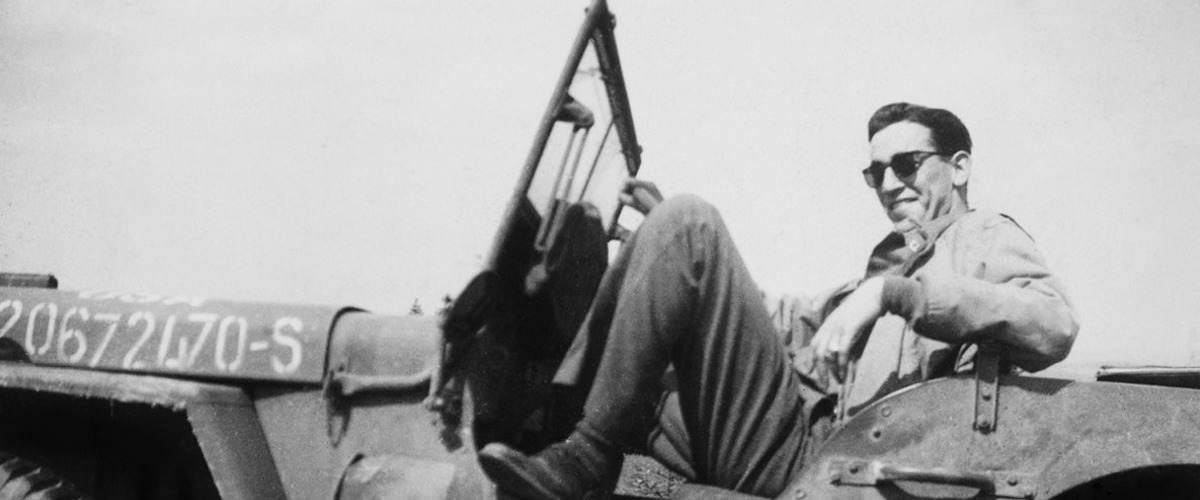“Sometimes you get tired of riding in taxi cabs the same way you get tired of riding in elevators. All of the sudden, you have to walk, no matter how far or high up.”
Where do you even begin to tell the story of J.D. Salinger? The unique voice that rose from Catcher in the Rye in 1951 became famous almost overnight, as millions of people around the world identified with the iconic sixteen year-old protagonist Holden Caufield.
An author who spent the majority of his time locked away in a room writing (and writing…and writing) until the very last of his days, Salinger’s private life has never really been exposed until Shane Salerno’s documentary (also first published as a biography by Salerno and David Shields). In fact, most of his life’s works haven’t even been released yet—making his stories even more anticipated and mysterious.
Salinger dissects the life of his many lovely affairs with young ladies (like, 14 years young!), World War II, and him isolating himself completely—writing, of course—just as we were hoping for more literary hits such as Catcher in the Rye. Over 150 subjects were interviewed for the film, including Philip Seymour Hoffman, John Cusack, Judd Apatow, Danny DeVito, and Edward Norton—all expressing their association with Salinger, whether actually meeting him on the street or just how his story changed their lives.
But Holden Caulfield didn’t just appear in Catcher in the Rye. A subsequent short story I’m Crazy that was first published in a December 22, 1945 issue of Collier also featured Caulfield—a six years prior version of the boarding school dropout that would later go on to redefine post-war America and be cherished on bookshelves forever.
So where did Salinger’s voice come from? Whether you like his work or not, you can’t deny the man led a very unique life serving as an interrogator, one of highest ranked intelligence officers in the US military. He questioned prisoners in Italian and French, investigating whether or not they were a part of the Nazi regime. But somehow, amidst his developing crazy, he went on to marry a Nazi party affiliate Sylvia Welter secretly—showing just how insane he really was (their marriage only lasted two years.)
“I’d give my right arm to get out of the Army, but not on a psychiatric, this-man-is-not-fit-for-the-Army-life ticket. I have a very sensitive novel in mind, and I wont have the author called a jerk in 1950. I am a jerk, but the wrong people mustn’t know it.” —letter to Ernest Hemingway in 1944
Salinger seemed to have a disconnect between this idea of true love and him living out this idealized love that may have something to do with 17 year-old Oona O’Neil leaving him for Charlie Chaplin while he was off somewhere in a war trench after being drafted in 1942. For instance: his unique affair with the lovely young Miss Jean Miller whom he met on vacation in Florida (she was only 14 at the time.) While he respectfully kept his distance until she was of age, the two wrote each other for years and he really quite adored her; his story “For Esme—With Love and Squalor” is inspired by their relationship. But as soon as they finally did have sex, he dismissed her forever—sending her off on a plane back to her hometown. In an interview Miller admitted that right after their first sexual encounter she was taken off the pedestal.
Whatever the motive behind his serial dating of young on the road to adulthood girls, often undergraduate authors he’d read about in newspapers, the pickup line, “I wrote Catcher in the Rye” never seemed to fail Salinger. Each of his relationships ended up being doomed by his devotion to his work—so much so that he’d even put on a jumpsuit he called his work “uniform” while hiding behind his typewriter day and night.
So don’t think for one second The Catcher in the Rye is the last you’ll hear of J.D. Salinger. Ohh no. Many forthcoming works that have been locked away in Salinger’s safe are to be released over a course of the next 5-10 years or so. Including “The Family Glass” collection, a new version of “The Last and Best of the Peter Pans” (a complete history of the Caulfield family), and an unnamed World War II novel based on his life as a counterintelligence officer.
Salinger is an informative historical documentary filled to the brim with facts and information that reveals never before told secrets of an author that though stemmed from a life of privilege, went against the societal grain through his works and “ordinary” life. Given the overload of information available, Salerno’s documentary threads together an always talked about figure in two hours of rare photographs, confessional interviews, and war footage that will keep the goosebumps coming.
(sources: Roger Ebert, The Word Demon, & Thought Catalog)





